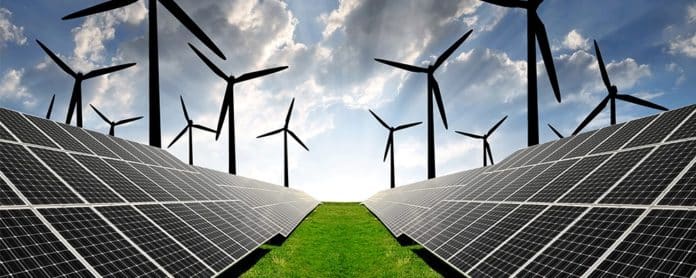The world is moving in the opposite direction of the Paris climate pact goals, with investment in renewable energy falling for the second consecutive year in 2018 and spending on fossil fuel extraction rising, the world’s energy watchdog has warned. Spending on renewable power such as wind, solar and biomass projects slipped 1 per cent in real terms to $304bn in 2018, the lowest level since 2014, according to an International Energy Agency report published on Tuesday. Investment in coal mining rose by 2.6 per cent compared with the previous year — the first uptick since 2012 — to $80bn, while capital expenditure in oil and gas extraction saw a 3.7 per cent increase to $477bn. Under the Paris accord, nearly 200 countries pledged to limit global temperature rises to less than 2C above pre-industrial levels. “Compared to 2015 when the Paris climate agreement was signed, the appetite to push low carbon investments and policies is slowly fading,” Fatih Birol, IEA executive director, told the FT. Last year, carbon dioxide emissions from human activities reached a record owing to increased fossil fuel consumption. If there was a bigger political will, we would have seen the numbers go the other way. I would put responsibility for investment flows on governments Fatih Birol, IEA executive director Please use the sharing tools found via the share button at the top or side of articles.
Two-thirds of the world’s capital investment in energy — which stood at $1.85tn last year — was spent on hydrocarbons, with the remaining third spent on low-carbon efforts such as renewables, nuclear and energy efficiency. “If there was a bigger political will, we would have seen the numbers go the other way,” Mr Birol said. “I would put the responsibility of investment flows and which direction they go on the governments of the world.” The generation capacity of new renewable power projects was flat last year compared with the previous year — making 2018 the first year with no growth in new renewable installations since 2001. This marks a big shift from previous years, which saw renewable power capacity increase even as investment levels were stagnant, owing to falling costs. Between 2010 and 2018, the cost of new solar fell by 75 per cent and that of onshore wind turbines by 20 per cent, prompting a surge in renewable installations. However, that growth came to a halt last year, as China slashed solar subsidies and new renewables capacity fell in India and the EU.
Please use the sharing tools found via the share button at the top or side of articles. uction drove a jump in oil and gas spending. In an uncertain energy transition, big energy companies such as Royal Dutch Shell and ExxonMobil have been drawn to shale projects that require modest cash injections and less time to start up compared with the capital-intensive mega-projects of the past. China remained the largest market for total energy spending and accounted for more than half the investment into coal mining, followed by India and Australia. But the IEA said its spending almost all went on sustaining production levels rather than opening new mines.






















